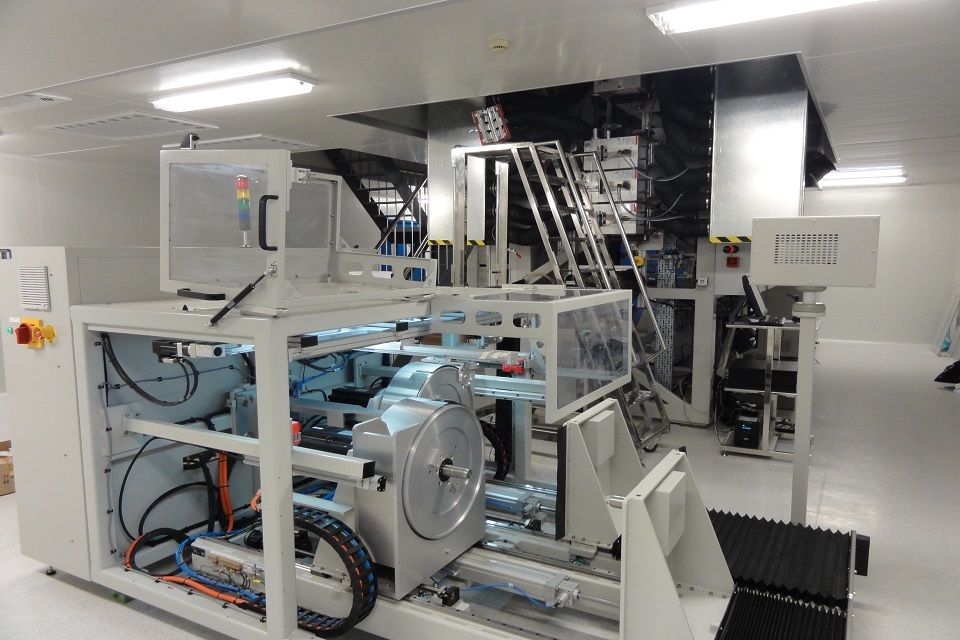Cambridgeshire optical fibre company secures growth in Asia
SG Controls set to double export volume following surge in international demand, creating 40 new local jobs.

SG Controls' optical fibre tower under construction. Funding supported by UKEF. (c) SG Controls
SG Controls, a Cambridge-based company that designs and supplies equipment for the optical fibre manufacturing sector, is set to double the volume of products it makes following a surge in demand in China, Japan and India.
Optical fibre is used to transmit information from one place to another and is a fundamental part of the mobile telecoms and internet infrastructure. The company is a global leader in the development, design and supply of machines that make optical fibre from its sites in Newton, Cambridgeshire and Heysham, Lancashire.
Demand for data transmission and communications is growing rapidly around the world, particularly in Asia. This has led to an increase in orders for SG Controls’ fibre making towers, each of which costs up to £2 million, is 45 metres high and can make over 2 million kilometres of optical fibre a year.
SG Controls has been exporting its products since 1979 and is working with trade advisers from the Department for International Trade (DIT) and UK Export Finance (UKEF), which is supporting the company to fund its new ventures in Asia.
The company’s international success led to the creation of 40 new jobs at its site in Newton in the last 18 months to cope with growing demand.
Ian McNulty, Managing Director at SG Controls, said:
Optical fibre is the backbone of the internet and it was invented in the UK. At the moment, half of the world’s optical fibre is going into China, where they are installing cables across the country. In India, optical fibre is progressively replacing the old telephone wire network. Research and new product development, coupled with this emerging demand overseas has driven our business growth massively.
Because our projects, often involving the design and supply of multiple towers, take a long time to deliver and utilise considerable volumes of cash until completion, funding growth is particularly challenging. Previously, this limited our capacity to take on new contracts.
Working with the DIT enabled us to find a funding mechanism to satisfy our requirements and those of our customers, as DIT trade advisers work directly with UK Export Finance to provide support to our banks to allow them to issue guarantees to customers.
Being able to offer these partial guarantees was crucial to us securing new projects and to our overseas growth. If a business as niche as ours can succeed in India and China, then so can other local businesses.

SG Controls optical fibre manufacturing equipment, supplied with UKEF support. (c) SG Controls
Alan Pain, Head of Exports for DIT East of England, said:
SG Controls is a fantastic example of a British business that is a leader in its field. It has found a ready market for its innovative machinery, which is providing the infrastructure that is connecting the world and helping drive prosperity in emerging markets.
Our team has worked alongside UKEF to support the business with access to crucial financial tools and introductions to potential new customers, which is all part of our focus to convert more of the region’s companies into successful exporters. Exporting is already a significant driver of growth for the region’s economy and we’re encouraging even more businesses to tap into this opportunity.
Any business that is thinking about overseas expansion should get in touch with our team of 30 international trade advisers for guidance and support. We’re located across the East of England and are ready to help businesses looking to get their products abroad.
Companies looking for support should visit great.gov.uk, which has information on live export opportunities and includes general information on exporting and events.